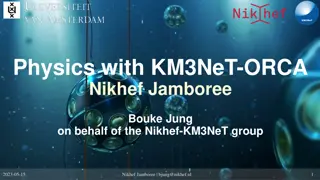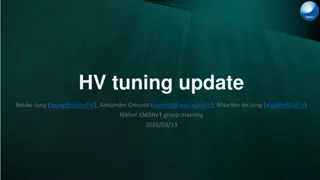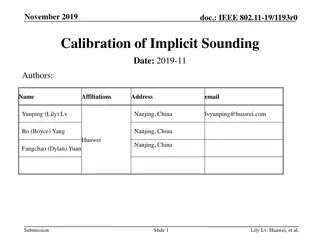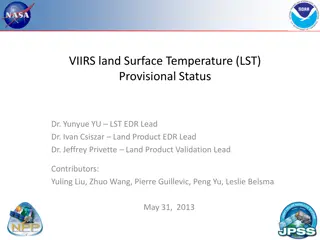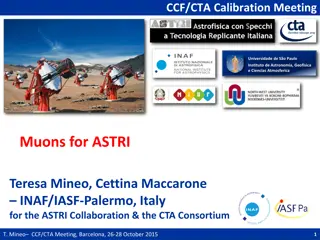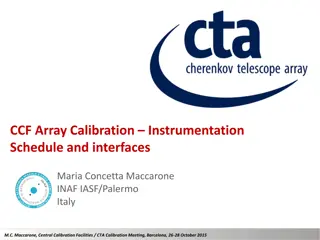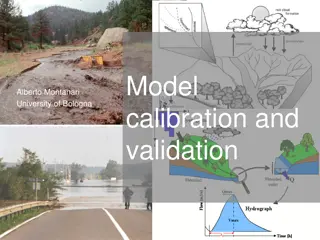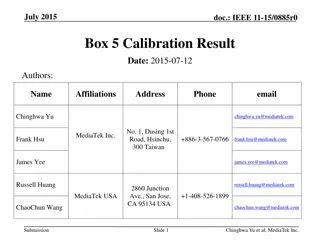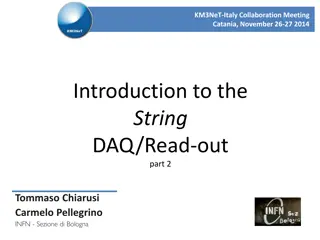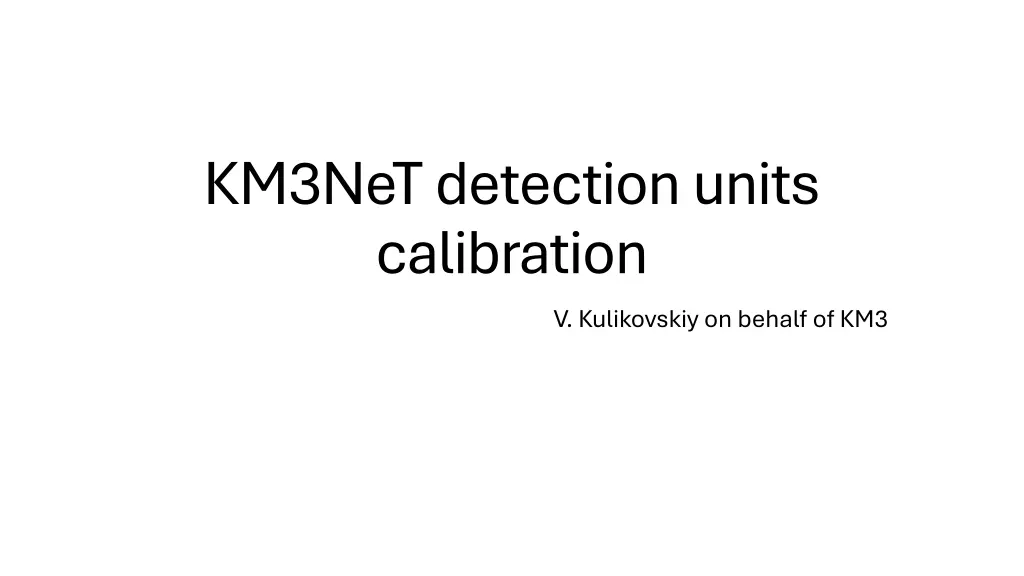
Cutting-Edge Calibration and Operation of KM3NeT Detection Units
Explore the advanced calibration and operation procedures of KM3NeT detection units, including system setup, data analysis, time calibration, instrument checks, and more. Benefit from a real setup for calibration using high-end technologies and international collaboration.
Download Presentation

Please find below an Image/Link to download the presentation.
The content on the website is provided AS IS for your information and personal use only. It may not be sold, licensed, or shared on other websites without obtaining consent from the author. If you encounter any issues during the download, it is possible that the publisher has removed the file from their server.
You are allowed to download the files provided on this website for personal or commercial use, subject to the condition that they are used lawfully. All files are the property of their respective owners.
The content on the website is provided AS IS for your information and personal use only. It may not be sold, licensed, or shared on other websites without obtaining consent from the author.
E N D
Presentation Transcript
KM3NeT detection units calibration V. Kulikovskiy on behalf of KM3
Objectives Demonstrate KM3NeT DAQ system. Optical and copper cablings, SFP-based network, Mini-rack build for DAQ (rack choice, power, installation advices). Demonstrate KM3NeT (mini) detector operation. Runs planning. Data analysis. Calibrate detection unit. Time calibration skew measurement with oscilloscope. Time calibration with laser source data analysis. Automated mass PMT high-voltage tuning: runs planning and data analysis. Instrumentation check: Piezo and hydrophone background and signal measurement in non-audible range (30KHz). Tilt & Compass check.
Setup Detection Unit: 18 optical modules 31 PMTs Piezo acoustic sensor FPGA with White Rabbit core (time synchronisation <1ns) Tilt & Compass LED emitter Hydrophone or Hydrophone + Acoustic emitter Test station Mini shore station fully operating DU in the exactly same way as a KM3NeT detector (runs planning, raw and triggered data acquisition, calibration devices control etc). Picosecond laser source. Acoustic emitter.
Risks The proposed course is based on the setup that is used for the continuously going integration. The DU at the course time and date may be not available (not yet finished or already sent for deployment). Attention to the system setup. Advantages This is what we actually do. Real setup for calibration and not the demonstrator or the lab toy setup. System developed by international collaboration using best practices and high end technologies. White rabbit synchronisation. Optical fibernetworks with DWDM. Docker based DAQ system.


